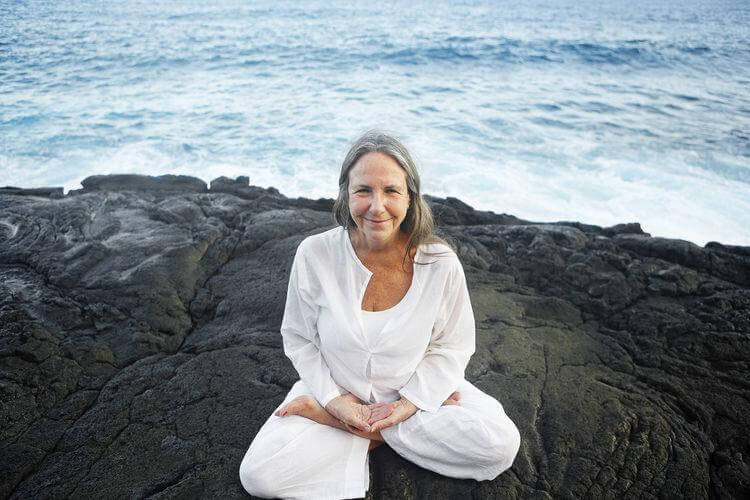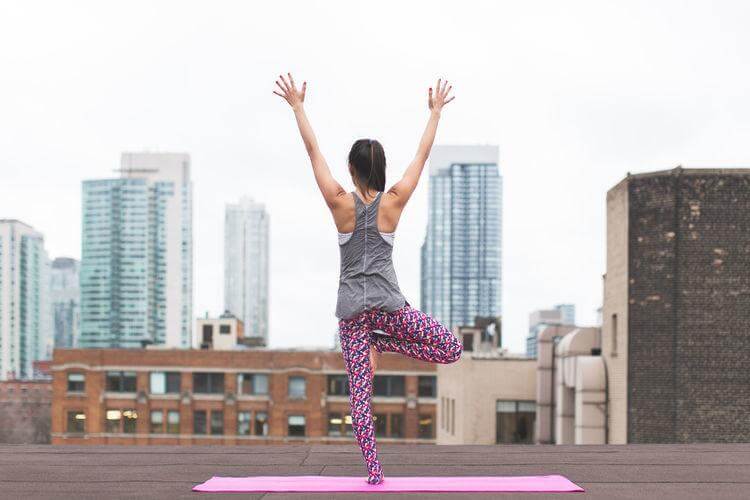Author: Randeep Singh / go to all articles on Yoga Concepts

The ultimate goal of all the processes
of Yoga, is to steady the individual Mind
(Buddhi), so that it can become one
with the universal Mind ( Mahat);
the individual soul merges with the
universal soul.
A layman may not understand these
higher Yogic concepts, but even he is not
able to achieve any desired results from
what ever minuscule fragment of Yoga he engages himself
into unless it is working on his Mind the right way. The concept of four bhavas help here. All Yogic processes work on our Mind – Buddhi by generating certain experiences within ourselves. These experiences, emotions, or feelings known as Bhavas need to be intensified while doing the corresponding technique in order to extract maximum benefits from it. Thus Yoga needs to be done with complete mindfulness.
Buddhi is generally represented by four Bhavas: Dharma, Jnana, Vairagya and Aishwarya. Different Yogic techniques generate different Bhavas. All the four bhavas are explained below with the corresponding yogic techniques which help us achieve them.
Dharma Bhava – Four Bhavas
Dharma means Duty, or activities required to be done even if the Mind is not feeling like doing them. Discipline is another aspect of Dharma. A Mind set free will run in all directions scattering the energy thin and weak. A weak Mind is incapable of achieving anything, leave aside steadying itself for gaining transcendental experiences.
For training our Mind into doing so, first comes the meditative postures. Meditative postures like Sukhasana, Padmasana help in directing the extremities of our body towards the mid-line generating a feeling of integration in our physical self which indirectly prevents our Mind from scattering.
Strictly following the Yamas & Niyamas as proposed by Patanjali works as a conditioning process on the Mind. A conditioned Mind is always steady and in present. Yoni Mudra, prayer pose works as a effective conditioning technique, which helps by gathering our Mind from all over and fixing it down to a single point. These techniques help us to experience discipline, duty and being in present which is nothing but experiencing the Dharma Bhava in ourselves.
Four Bhavas – Jnana Bhava in Yoga
Jnana or Gyan is knowledge. Knowledge which is not colored by feelings, desire, impulse or intuition. Knowledge is either external – being conscious, experiencing, of the external world, or internal or being aware of the self – nature, soul and different states of Mind under different conditions.

Such colourless Jnana or Knowledge is only possible when the Mind is steady, concentrated, or Ekagra, or away from any influences. Only this kind of knowledge can help in spiritual development. Ekagrata can be attained by being conscious of the body, synchronization and fixation.
Kriyas like Jalneti, Kapalbhati, Dhauti and Trataka helps us with increasing our body awareness; asanas like Ekpadasana, Garudasana, Talasana, Utkatasana aid with improving our synchronisation where we are prompted to synchronise multiple independent movements for getting into a single posture.
Vairagya Bhava in Yoga:
Vairagya is ‘ let go’. Let go means shaking off the unwanted dust – feelings, concepts, attachments, fears, desires etc., from our body which we tend to gather along our journey through the life. These unwanted debris cover our Mind like a blanket impacting our priorities in day to day life. Patanjali has mentioned it in yoga sutra 12, chapter 1, as a technique along with abhyasa which can help one reach kaivalya, or absolute consciousness.
Removing this covering will give us a objective view of everything we are associated with. Moreover once the Mind is cleansed of this unwanted baggage it gets lighter, lighter Mind can slip into a steady state much more easily than when it was burdened. Relaxation helps with letting go of this mental dust. For achieving this the relaxation needs to be experienced while you are fully aware of your environment around you. When the Mind becomes bereft of anxiety or cognitive dissonance, or is relaxed, while being aware of the external world it can attain objectivity/understanding and not in its other states. In states like sleep or depression one is not aware of the external environment, and thus the objectivity cannot be achieved by being in these states of mind.
Shavasana , Nishpanda bhava are some of the relaxation techniques which can induce objectivity when done with complete awareness. Shavasana if done with complete awareness can help to even let go off the consciousness of our own body giving us the feeling of existing only as a soul or a Mind.
Shavasana , Nishpanda bhava are some of the relaxation techniques which can induce objectivity when done with complete awareness. Shavasana if done with complete awareness can help to even let go off the consciousness of our own body giving us the feeling of existing only as a soul or a Mind. Forward bending asanas like Yoga Mudra and Paschimottanasana also inculcate the feeling of let go in us.
Aisvarya Bhava in Yoga:
Aisvarya is the strength to break open out of the clutches of kleshas, impediments which are holding us down and low into the quagmire of failure and doubt. Yoga believes that this strength is hidden within all of us, but we are unaware of the same. Inculcating Aisvarya Bhava through various yogic techniques can help us gain competence and power for rising above our human nature.

Thus we can train our conscious through Yoga toward realising its energy which remains latent due to the impact of the samskaras and kleshas. Kriyas like Jalneti and backward bending asanas like Bhujangasana along with its variations help us inculcate Aisvarya bhava in the mind.
Practicing the above mentioned yogic techniques regularly will naturally inculcates the respective feelings or states of Mind in us. We can intensify the same by consciously cultivating the respective feelings while getting into these techniques.
Ones cultivated, all these bhavas working in unison steady the Mind and fulfill the ultimate goal of Yoga.
Read other Informative Articles….
Is your Thinking Negative or Positive – Test
Shahzadpur Ideal Destination for Wellness
